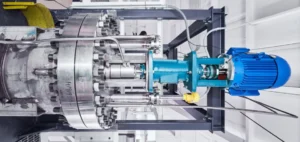The Nuclear Safety Authority (ASN), has ordered EDF to “revise its strategy” to resolve the problems that have been disrupting its plants since the end of 2021. This decision was taken after the discovery of a new crack in an emergency circuit of a shutdown reactor, Penly 1, in Seine-Maritime. EDF has detected a “significant stress corrosion defect” on a backup pipe used to cool the reactor in case of emergency.
A corrosion phenomenon present
EDF’s nuclear fleet of 56 reactors has been in an unprecedented crisis since the discovery of stress corrosion in October 2021. This situation led to the shutdown of many reactors for extensive monitoring and repair operations, which contributed to the colossal losses recorded by the electric utility in 2022.
New crack discovered at Penly 1
The new defect was detected during “metallurgical expertise” on “a weld filed in January”, according to a note published on the group’s website. The crack is located near a weld of a relief pipe used to cool the reactor in case of emergency. It “extends over 155 mm, i.e. about a quarter of the circumference of the pipe, and its maximum depth is 23 mm, for a pipe thickness of 27 mm”, according to the ASN. The piping could have been weakened by a repair operation aimed at “realigning” the circuits, at the very moment of the reactor’s construction.
A persistent crisis for EDF
While EDF believed that it was out of the crisis on the treatment of stress corrosion, this announcement casts new uncertainties on the prospects of the electric utility for 2023, after a dark year plagued by the setbacks of its nuclear fleet. In 2022, France experienced its lowest level of electricity production since 1992 and had to import electricity from its European neighbors.
The ASN has classified this new crack as level 2 on the INES scale (which has 8 levels) for reactor 1 of the Penly nuclear power plant and as level 1 for the other reactors concerned, notably Civaux and Chooz B. Yves Marignac, an energy expert and member of the ASN’s permanent groups of experts, emphasizes that “the fact that larger cracks are possible raises the question of keeping the six reactors of the same type, P’4, in operation while awaiting their preventive repair.






















